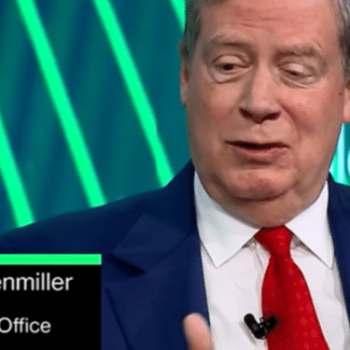
We’ve just witnessed history, yet again.After a 1 in 100 year pandemic, we’re hit last weekend with the 2nd and 3rd largest bank failures in the USA.Couple that with the fastest interest rate rises in generations…And today we’ll talk about investor attitudes and one of the single MOST IMPORTANT rules in investing.
Have You Ever Been Hit by a Tomato?
The first recorded incident of an audience throwing tomatoes at a performer was way back in 1883.The New York Times reported how an acrobat named John Ritchie was pelted with tomatoes after disappointing a Long Island crowd.Ritchie allegedly fled through a “perfect shower” of tomatoes.Since then, audiences have used other foods like eggs and turnips to express their displeasure over a performance, but for some reason, the tomato became the protest food of choice.It’s how the world’s most powerful movie review website, Rotten Tomatoes, got its name.The truth is, we’re all performers in one way or another.As the Chief Investment Strategist of Katusa Research, even I’m on a public stage performing for investors, and just like any other performer, I’ve had tomatoes thrown at me.
Tomato Targets
It doesn’t take long to become a target in the investment business.
Successful investing is a task where the difficulty is on par with brain surgery. Even the best guys can’t help but make embarrassing mistakes.But in this section, I’m not here to talk about the mistakes of famous investors.Today, I’m here to talk about you…The truth is, you might be making this mistake yourself.Now, what I’m about to say might sound critical, but there’s a big benefit for you in all this.If you learn why this source of anger and criticism is so misguided, you stand to become a much better investor.
- This is “master’s level” knowledge that will vastly improve your results.
So, with that said, here’s the most common and most misguided source of anger and nasty letters among investment research consumers.Comment #1:
“What you said about ABC Stock didn’t happen. You are the dumbest SOB on the planet. Because of my losses in ABC, I can’t retire.” Comment #2:“I can’t believe ABC Stock didn’t work out. I put everything into that stock. You’ve ruined me.” Comment #3:“You were wrong. ABC Stock didn’t go up. It went DOWN. I had half of my portfolio in that stock. You’re worthless. Your company is worthless. I’m screwed now.” The comments you see above differ in wording, but they come from the same source:
The Wrath: Separation of Winning Investors from Losers
The most successful investors know that one bad stock recommendation doesn’t make or break an investment strategy.Because one single stock you recommended went down instead of up, a nice little schoolteacher from Kansas City will say the worst things in the world about your mother.An unsuccessful stock pick will make people say truly awful things to you.
- These kinds of comments come from a common source: Ignorance of what truly leads to a lifetime of successful investment.
In fact, these comments reflect what is perhaps the greatest difference between successful investors and investors who always struggle with investing and lose money in the market.The difference?
- The unsuccessful investor regularly places 100 times too much importance on what happens with a single stock position.
Because he gets so excited and emotional about the prospects of individual companies, the unsuccessful investor makes critical position sizing mistakes.This harms him every single year… and kills his returns over his career.
- Position sizing is the part of your investment strategy that dictates how much of your portfolio you place into a given stock, bond, fund, or commodity.
For example, suppose an investor has a $100,000 account. If he buys $2,000 worth of stock in a company, his position size would be 2% of his capital.If he buys $5,000 worth of stock, his position size is 5% of his capital.Position sizing is far, far more important to your success than any one single stock position.And many people who actually do think about position sizing think about it all wrong…Many people think of position size in terms of how many shares they own of a particular stock.But it’s much, much smarter to think of it in terms of what percentage of your total capital is in a particular stock.Now, the single most important thing to remember…
Avoid The Catastrophic Loss
Position sizing is the most important way investors can protect themselves from what’s known as a “catastrophic loss.”A catastrophic loss is the type of loss that erases a big chunk of your investment account.It’s the kind of loss that destroys retirement accounts… and even marriages. I’m talking about a loss that leads to a $250,000 account plummeting to $100,000 or $50,000 in value.
- The most common cause of catastrophic losses is going “too big” on risky positions.
This occurs when an investor takes a much larger position size than he should.He’ll find a stock he’s really excited about… he’ll start thinking of all the profits he could make…and then he makes a huge bet. He’ll place 30%, 40%, 50%, or more of his account in that one idea. He’ll go for broke and buy 6,000 shares of a stock instead of a more sensible 1,000 shares.If the position doesn’t work out, he can suffer a 50% hit to his capital. In some cases, he can suffer a devastating 100% loss of capital.For example, some Enron employees put all of their retirement money in the company’s stock…and then lost everything when it blew up.Those people made horrible position sizing mistakes by risking everything on just one stock.The obvious damage from a catastrophic loss is financial.An investor who starts with $100,000 and suffers a catastrophic 80% loss is left with $20,000.It takes most people years to make back that kind of money from their job.I’m telling you all this to emphasize a simple point:
- Avoid the catastrophic loss by carefully sizing your positions!
You won’t believe how many times I have to repeat that.
Position Sizing 101
Most top investors will never put more than 5% – 10% of their account into any one position.Some professionals won’t put more than 3% in one position. My personal limit is 10%.When dealing with more volatile vehicles like resource stocks, position sizes should be smaller.This will keep your risk level at an acceptable level.Put another way, before you start speculating in resource stocks, you should know how much money you want to allocate to the sector as a whole.This should be money that you can lose without it affecting your lifestyle.Never allocate more than 10% of your junior resource portfolio into any one stock.Unfortunately, many investors will risk three, five, or ten times as much as they should.It’s a recipe for disaster if the company they own suffers a large unforeseen decline.These large declines happen with much greater frequency than most folks realize. No matter how promising a company sounds, its fortunes can always turn south.Smart position sizing will keep the damage it causes to an acceptable minimum.I like to get as excited about a company’s prospects as anyone.I love analyzing balance sheets and visiting projects.I love taking a stake in a small company and watching it achieve success.But here’s the thing…I never lose sight of what is truly important for achieving long-term investment success. And that is making sure I’m not exposing myself to catastrophic losses.Successful investing is a marathon. It’s not a sprint.Building long-term wealth for your family comes down to regularly making intelligent decisions that provide a good balance between capital growth and capital safety.It does not come down to rolling the dice and “going big” on a single stock.
The Crystal Ball Doesn’t Exist
I will make mistakes. Only frauds would claim otherwise.We find stocks with huge upside potential. But we follow a time-tested approach used by the greatest investors throughout history.We never bet the farm on one position. Our winners more than make up for our losers.Over the long run, this approach will allow anyone to grow their wealth.Your number one job as an investor is “don’t lose money.” Smart position sizing will help you do your job well.The next time you feel rage or despair over what one single stock is doing, take a deep breath. Take a long walk.Ironically, the same goes if you miss out on a stock.Don’t worry. Be an alligator investor. Don’t chase stocks.Be patient and wait for a market correction to happen; they always have, and they always will. And if you do miss one stock, don’t worry–there will always be a new idea coming to you shortly.Then, with a clear head, review your position size. Review your portfolio.Ask yourself,
- “Am I taking insane risks? Does this position make up far too much of my portfolio? Is my anger or despair an indicator that I’m doing this all wrong?”
If you think the answer to these questions is even “possibly,” it’s probably time to reduce your position size.Cut it by at least 50%.Avoid the catastrophic loss.Your net worth will thank you.Marin KatusaP.S. To see what I’m doing with my own money, including my thoughts and detailed analysis of a position, you’ll want to become a subscriber to Katusa’s Resource Opportunities. I can’t make the trades for you, but you can learn from the bets I’m making. You can get started right here.
Details and Disclosures
Investing can have large potential rewards, but it can also have large potential risks. You must be aware of the risks and be willing to accept them in order to invest in financial instruments, including stocks, options, and futures. Katusa Research makes every best effort in adhering to publishing exemptions and securities laws.
By reading this, you agree to all of the following: You understand this to be an expression of opinions and NOT professional advice. You are solely responsible for the use of any content and hold Katusa Research, and all partners, members, and affiliates harmless in any event or claim.
If you purchase anything through a link in this email, you should assume that we have an affiliate relationship with the company providing the product or service that you purchase, and that we will be paid in some way. We recommend that you do your own independent research before purchasing anything.






